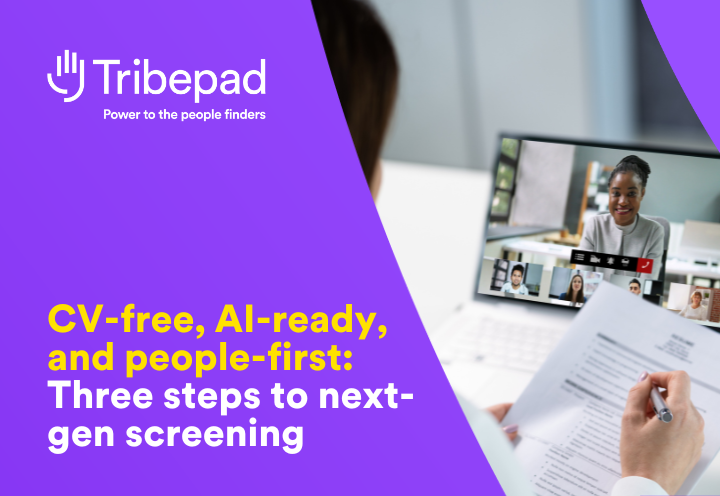(And how to turn things around, to create a better working relationship…)
We all know why recruiters sometimes get frustrated with hiring managers.
A poor hiring manager stalls the recruitment process and loses you candidates (then probably blames you…) They give vague, muddled job descriptions. They’re impossible to please. And they make poor hiring decisions that send you back to the drawing board.
But let’s put the shoe on the other foot.
Because more often than not, a so-called poor hiring manager is a symptom of relationship breakdown. And any relationship takes two.
So… here’re ten things you might’ve been doing that drives your hiring managers up the wall – and how to turn the tables. Fix these, and you clear the path for better collaboration and better recruitment outcomes.

1 – You don’t understand the role
63% of hiring managers feel recruiters don’t understand the jobs they recruit for. Sure, screening out a diamond from hundreds of poorly qualified applicants is a nightmare (especially as application volumes are increasing to silly levels).
But you can empathise with hiring managers getting the hump if there’re wasting time reviewing CVs that seem totally irrelevant.
Fix it?
- Schedule an upfront meeting. If you don’t understand the job, the entire recruitment process crumbles. Creating alignment upfront is crucial but hiring managers mightn’t appreciate this is a two-way street. Don’t let hiring managers fob you off with a bad brief, however busy they are or urgent the role. Schedule time to interrogate why hiring managers need X, Y or Z.
2 – You send them poor-fit candidates
The hiring manager wants a developer with five years’ experience in C#. Not an easy find – but you finally spot someone with the right skills. Fantastic. Except then the hiring manager’s knocking back on your door because the interview was terrible.
Fix it?
- Understand the team culture. You know cultural fit is one of the biggest predictors of productivity and retention. But your hiring manager might not. Help hiring managers codify their ‘gut feel’, so you know assertive’s great but arrogant’s not. Or that introverts might find the team dynamic overwhelming.
- Use early-stage video interviewing. Team/culture fit is hard to assess over the phone. Video interviewing gives you a better understanding of candidates, earlier than usual. They’re a fantastic alternative to telephone interviews, for example. It also means hiring managers can review candidates themselves in a fraction of the time it’d take to interview.
(If you’re using Tribepad Video Interview, recruiters can review, rank and flag video interviews for further attention. Then hiring managers get quick summaries and urgent action points from their mobile, so reviewing takes less than a tea break.)
Read more: 31 practical ways to improve quality of hire in 2020
3 – You put unrealistic demands on their time
Most hiring managers have enough on their plate without recruitment. More than enough, or they’d not be recruiting for extra hands. In that context, chase, chase, chase, never goes down well.
But then, 56% of recruiters say their biggest bottleneck is hiring managers moving candidates through the hiring stages. 43% say the culprit’s hiring managers reviewing CVs. So what’s the alternative to chasing?
Fix it?
- Build a project timeline. Run recruitment like a project. Gain consensus around timelines, deadlines, goals and milestones upfront. So your hiring manager knows what time you’ll need, when, and can commit (and hold themselves accountable, instead of you chasing).
- Use recruitment tech that eases their burden. When you’re next upgrading your recruitment software, make hiring manager usability a priority. Great recruitment needs a great hiring manager relationship – and the tech you use can help (or hinder). Any talent acquisition software should be mobile-first with automated alerts, summaries and progress coding for hiring managers.
- Educate. 57% of recruiters feel hiring managers don’t understand recruitment – and if hiring managers don’t understand why you’re chasing, no wonder they’re frustrated. Share insight about dropouts correlated to time-to-hire, for example, or offers rejected for competing offers.
(If you’re using Tribepad’s talent acquisition suite, you can pull compelling reports instantly, to get hiring managers on-side).
4 – You go quiet on them
A role opens – it’s all systems go, go, go. You need to pin down the role – great, the hiring manager makes time. You need them to review the first batch of CVs urgently – great, the hiring manager makes time. And then… tumbleweed.
Fix it?
- Schedule communication touchpoints. Don’t fall into the feast and famine cycle of communication. Normalise short, regular, frequent check-ins between recruiters and hiring managers. And not just over email.
- Give them visibility. Look for talent acquisition software that brings hiring managers into the process rather than excluding them. A recruitment dashboard (ideally with different permissions levels depending who’s looking) increases visibility, so hiring managers feel in the loop. Without any extra effort from busy recruiters.
5 – You take too long to hire
Most hiring managers need someone yesterday. Sure, they know that’s impossible, but every day that passes brings snowballing stress, snowballing workload and snowballing dissatisfaction amongst the team.
Fix it?
- Manage expectations upfront. Hiring managers don’t always know what realistic time-to-hire looks like. They mightn’t realise you’re dealing with 100+ applications-per-job. Share data – ideally pulled from your own recruitment – to create realistic expectations.
- Galvanise their network. You have a great network – but your hiring manager almost certainly does too. Encourage hiring managers to cross-post adverts to their channels and email their own network for referrals. This is a two-part effort; you’re not an order-taker.
- Prevent in-process dropouts. Dropouts during recruitment are an unfortunate reality, and one of the biggest reasons your process stalls. Help safeguard against them by delivering a fast, modern candidate experience that’s proven to lower dropouts. (Schedule a 15-minute call right here to ask us how Tribepad helps you get there…)
6 – You sell to them
It’s easy to forget you and your hiring manager are on the same team. Especially if you’re at loggerheads with each other. But if you see the hiring manager as a gatekeeper, it’s all-too-easy to slip into “you-versus-them” type selling.
Fix it?
- Collaborate, don’t dictate. Build trust with your hiring managers, by taking an inclusive, collaborative approach to recruitment. People who trust you long-term are more likely to appreciate your insights without feeling you have an agenda. Pause before being pushy and work harder to empathise with your hiring manager’s perspective.
- Interrogate their needs at the outset. If you truly understand your hiring manager’s needs from the get-go, you’ll be presenting candidates that naturally align. The whole process feels natural, not forced – so hiring managers won’t feel sold to.
7 – You don’t sell to the candidate
Candidates turning up to interviews ‘blind’ put the hiring manager in the hotseat. And few things are more frustrating than wasting time interviewing someone who’ll never accept an offer because the role’s not right for them.
Fix it?
- Build a proactive attraction strategy. Every industry is becoming more candidate-centric and skills shortages plague almost everyone. Recruitment as a reactive, firefighting discipline has mostly had its day. Focus instead on proactive talent attraction strategies – like building talent pools and employer branding. (Two things Tribepad do really well, as it happens…) Then you’ll attract better-fit candidates who don’t need convincing – they came to you because they’re already convinced.
- Pitch the team and opportunity. Recruiters are often better at defining the ideal candidate profile than understanding the opportunity. Dig deeper at the start. Ask the hiring manager what’s great about the team, the role and the career development potential. Pre-qualify candidates so you know you’re a good fit for them too.
8 – You send them non-compliant candidates
Most of us have the horror stories. A candidate everyone loved who suddenly revealed they had no permit to work. Or don’t have a qualification they said they’d got. Or they’ve got a criminal record, or whatever.
Fix it?
- Automate compliance checks. Compliance is boring and unglamourous but does need doing. Take it off your plate altogether with recruitment tech that can automate compliance checks early in your process. And can even automatically rule out candidates who don’t tick certain boxes, so they never add to your workload.
- Maintain an active database. Compliance moves from a minor hassle to a major bugbear if you work lots with contractors, locums, freelancers, interim staff and other contingent workers. Use contractor management software to bring the end-to-end management process in-house, including effortlessly managing compliance. (Like Tribepad Flex…)
9 – You lose great candidates
Recruitment’s getting harder and time-to-hire’s creeping up. Your hiring manager’s losing patience. They’ve been waiting weeks to see someone that ticks the right boxes. And then – yes – at last!
You send them someone brilliant. Perfect team and culture fit; great interview. And then… nothing. The candidate declined the offer.
Fix it?
- Be a project manager. Remember that project plan we suggested earlier? A plan’s great but nobody’ll stay accountable unless someone takes ownership and urges accountability. That’s your role. Accelerate time-to-hire by making sure everyone stays on track. Faster offers mean less rejection.
- Learn how to give offers. If you ask agency recruiters, giving an offer is an art – like the moment of sale. Don’t just send an offer across and forget about it. Call the candidate; show excitement; handle any questions or potential objections upfront. This comes back to #7 – if you already know what the candidate wants and why the role’s a great fit, there’s less scope for rejected offers.
- Condense your recruitment processes. Most businesses have an extraordinary amount of inefficiency slowing their recruitment down. (That’s why Tribepad clients hire 50% faster). Introduce process efficiencies – like templates, workflows and automations – and look for organisational roadblocks that need addressing from the top-down. Could you move towards one-day interviews and offers, for example?
Read more: 15 ways to automate your recruitment process
10 – Unexplained friction
You’ve been through this list and there’s no obvious culprit… but your relationship with the hiring manager is BAD. It feels like you’re working against each other, and frustration is simmering under the surface. What now?
Fix it?
- Schedule a debrief meeting. If you get it right, you need to know why. And if you get it wrong, you really need to know why and what better looks like. The recruiter and hiring manager relationship should be a feedback loop, so you can continuously improve. Progress has a way of smoothing relationships.
- Confront the elephant. If your relationship with your hiring manager has reached a bad place, you might be best to confront the issue head-on. Arrange a meeting, air your grievances, listen to theirs. Then find a proactive way to move forwards and turn over a new leaf. Better recruitment depends on it.
We’re Tribepad. We help recruiters deliver better candidates, work smarter with hiring managers and deliver long-term business growth. Book a call to find out more…



